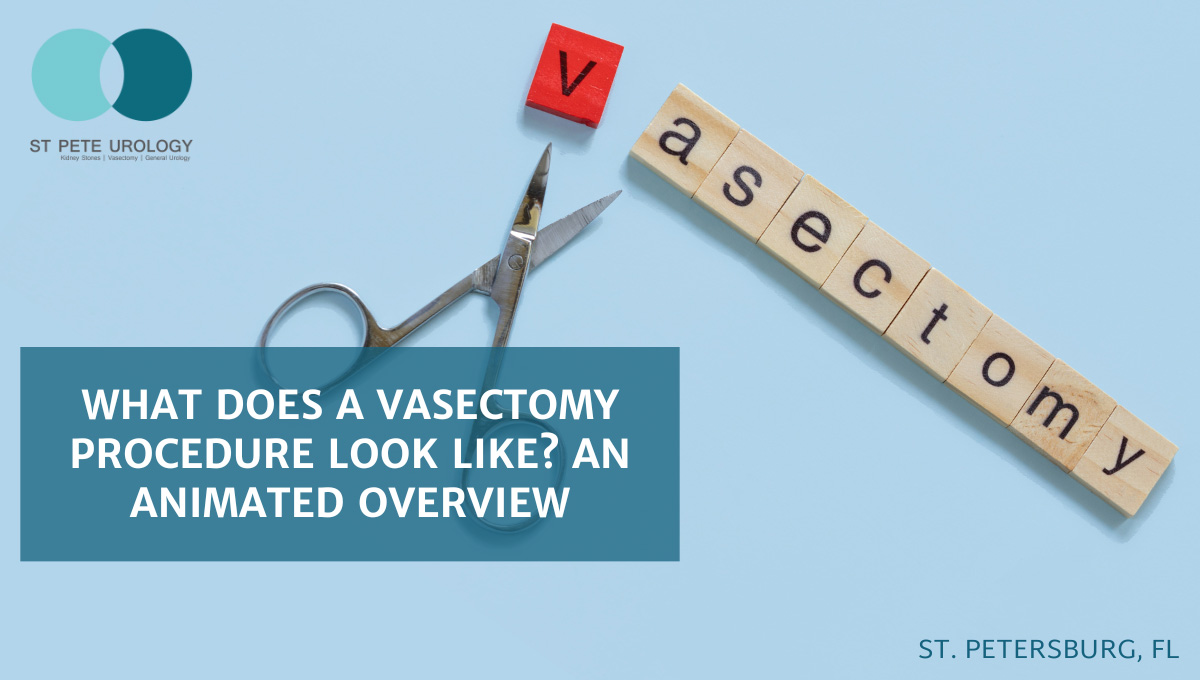3 Key Takeaways:
- It’s important to understand the journey of sperm in the male body to grasp the purpose and process of a vasectomy. Our vasectomy animation overview shows what does a vasectomy procedure look like.
- In a vasectomy, the vas deferens are methodically cut and tied off to prevent the passage of sperm and inhibit their contribution to the ejaculate.
- Following a vasectomy, sperm are still produced but are harmlessly absorbed by the body. Potential complications should be discussed with a doctor prior to surgery.
Anatomical Journey: Understanding the Pathway of Sperm


“The sperm continue to move through the seminal vesicles, the prostate gland, and the bulbo-urethral gland, mixing with seminal fluid and forming the ejaculate called semen”. This biological voyage culminates in the creation of the ejaculate, allowing for the possibility of fertilization.
What Happens and What Does a Vasectomy Procedure Look Like?
In a vasectomy, the vas deferens are methodically cut and tied off. The aim of this procedure is to prevent the passage of sperm, inhibiting their contribution to the ejaculate. It’s a revelation that may prompt shock for the uninitiated: “During a vasectomy, the vas deferens are cut and tied off so that sperm cannot be ejaculated.”
However, to the relief of men considering this surgery, ejaculation continues to occur normally — but now, sperm are removed from the picture. Without these reproductive cells, fertilization will not happen. Watch our vasectomy animation overview to know more about what does a vasectomy procedure look like.
Post-Vasectomy: The Fate of the Sperm
Some men might wonder, what happens to the sperm following the vasectomy? “Following a vasectomy, sperm are still produced but are harmlessly absorbed by the body.” In other words, the sperm don’t vanish after the procedure, they simply become benign participants in the body that are safely absorbed.
Considering Complications: The Necessary Dialogue
Any surgical procedure comes with potential risks and complications. It’s not a conversation anyone enjoys, but it’s a necessary part of the decision-making process. “There are several potential complications associated with this procedure that should be discussed with a doctor prior to surgery.” Talking to your urologist will equip you with the knowledge needed to make an informed decision that is best for your body and lifestyle.
Your Urology Partners: St Pete Urology
If you’re considering a vasectomy, it’s essential to seek guidance and care from a trusted professional. For residents of St. Petersburg, FL, the experts at St Pete Urology are equipped to guide you through this process and provide excellent care.
St Pete Urology is a specialized practice with a dynamic team dedicated to the health and wellness of their patients. Our urologists have an unrivaled understanding of the complexities of the vasectomy procedure, aiming to provide you with comprehensive, patient-centered care.
Choosing to have a vasectomy is a personal and impactful decision. But with diligent consultation and expert care from St Pete Urology, you can be confident in your choice. Let us be your trusted partner in your urology needs.
References:
- “Vas Deferens: Function, Anatomy & Conditions – Cleveland Clinic.” 11 Apr. 2022, https://my.clevelandclinic.org/health/body/22763-vas-deferens.
- “Is it the Prostate or Prostrate Gland? What Does it Do?.” https://www.pcf.org/about-prostate-cancer/what-is-prostate-cancer/prostate-gland/.
- “5 Things to Consider Before a Vasectomy – Urology Specialist Group.” https://www.besturologyclinic.com/blog/5-things-to-consider-before-a-vasectomy.
Transcription:
Sperm are male reproductive cells that are formed in the seminiferous tubules of the testes. Sperm travel through a lengthy duct system starting from the testes, through the epididymis, and then through long, narrow tubes called the left and right vas deferens.
The sperm continue to move through the seminal vesicles, the prostate gland, and the bulbo-urethral gland, mixing with seminal fluid and forming the ejaculate called semen. During a vasectomy, the vas deferens are cut and tied off so that sperm cannot be ejaculated. Ejaculation still occurs normally, however sperm are not a product of the ejaculate.
Therefore fertilization will not occur. Following a vasectomy, sperm are still produced but are harmlessly absorbed by the body. There are several potential complications associated with this procedure that should be discussed with a doctor prior to surgery.




